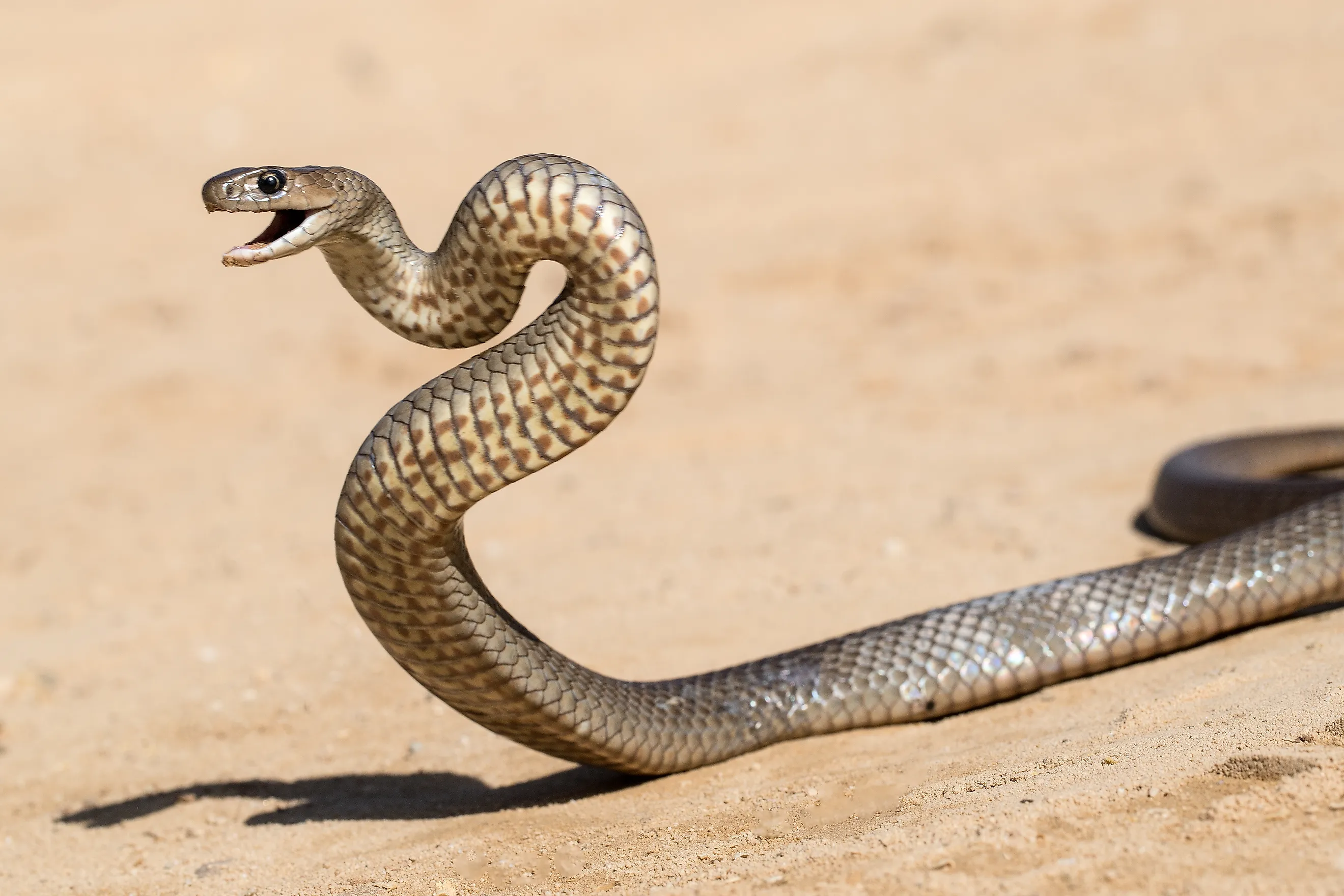
The 12 Most Venomous Snakes Of South Australia
South Australia is home to some of the most venomous and dangerous snakes in the world, and while their presence can be alarming, they play crucial roles in maintaining the balance of local ecosystems. The state, known for its vast and varied landscapes, from arid outback to temperate forests, is a habitat for many snake species. Among these, eight snakes stand out due to their deadly venom, aggressive behavior, or the frequency with which they cause human fatalities. Here is a detailed look at the eight deadliest snakes in South Australia.
Inland Taipan
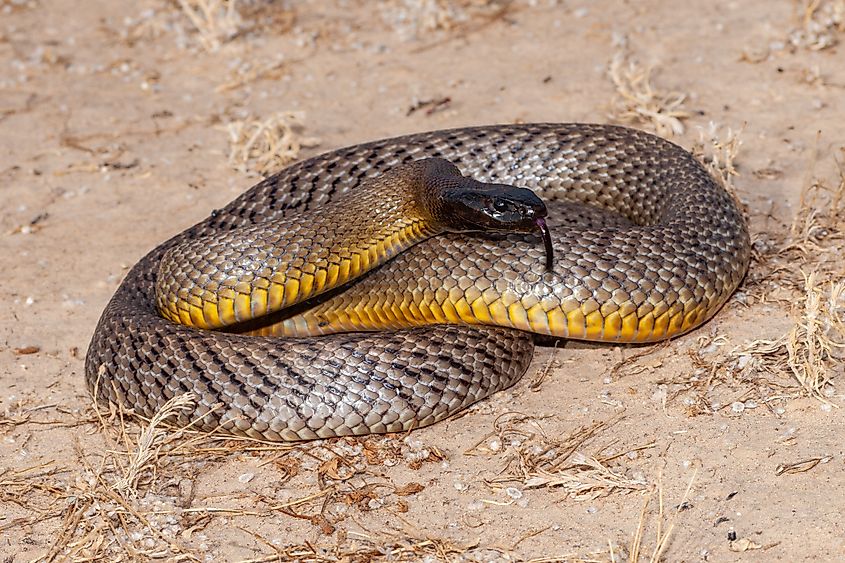
The Inland Taipan (Oxyuranus microlepidotus) is considered the most venomous snake in the world, with a highly toxic venom that can kill a human in less than an hour if untreated. This snake is found in the arid regions of northern South Australia, particularly in the far northwestern areas near the borders with Queensland and the Northern Territory. The Inland Taipan is a slender, olive-brown snake with lighter scales running along its body that is typically around two meters long. It is a reclusive snake, typically dwelling in the dry, rocky outcrops of the outback; thus, its venom, although lethal, is rarely encountered by humans.
Coastal Taipan
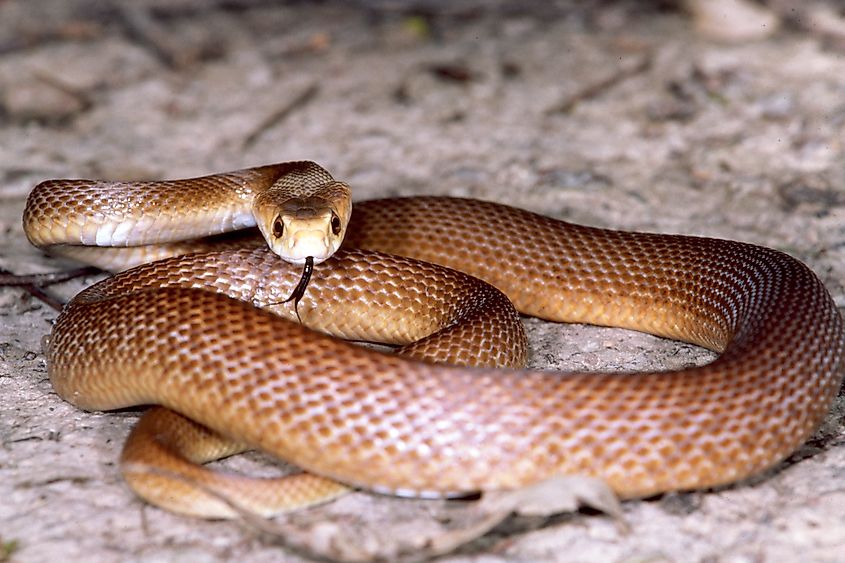
The Coastal Taipan (Oxyuranus scutellatus) is another highly venomous species found in coastal regions of South Australia. While less venomous than its Inland counterpart, the Coastal Taipan is usually considered more dangerous due to its anxious disposition, with venom potent enough to cause death within a few hours. These snakes typically raise their head and neck in a striking pose but otherwise strike without warning, often biting multiple times in one attack. The Coastal Taipan has the longest fangs of any Australian snake. It is typically found in coastal forests, heathlands, and sugarcane fields, preying on small mammals and reptiles.
The Coastal Taipan has a striking appearance and changes color with the seasons. It tends to be more brightly colored in summer and less so in winter, with a face and snout that are typically more pale than the rest of the snake, which has a smooth, light brown to olive body and a yellowish belly. If bitten, even if the bite seems minor, do not waste any time seeking medical attention.
Eastern Brown Snake
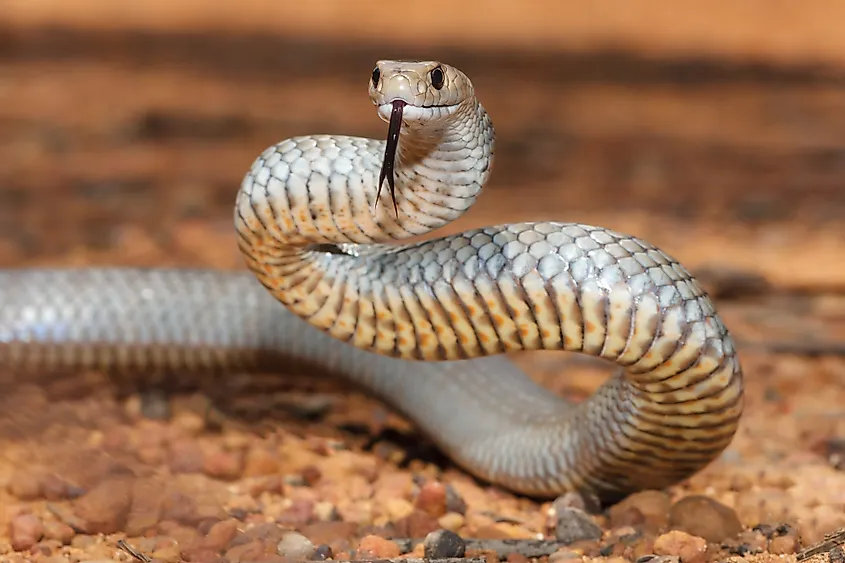
The Eastern Brown Snake (Pseudonaja textilis) is considered the most dangerous snake in South Australia. It is not only highly venomous but also widely distributed throughout the state, including in Victoria. This snake thrives in various habitats, from open woodlands and grasslands to suburban areas, often close to human habitation, particularly in areas of agricultural growth, where there is an overlap of human presence and robust populations of prey like field mice.
The Eastern Brown Snake is a fast-moving and aggressive species known for its quick strikes when threatened. Its coloration varies from a light brown to a darker, reddish-brown, with a pale underside, and can sometimes be mistaken for other, somewhat less dangerous Brown Snakes. Eastern Brown Snakes are responsible for more snakebite fatalities in Australia than any other species.
Tiger Snake
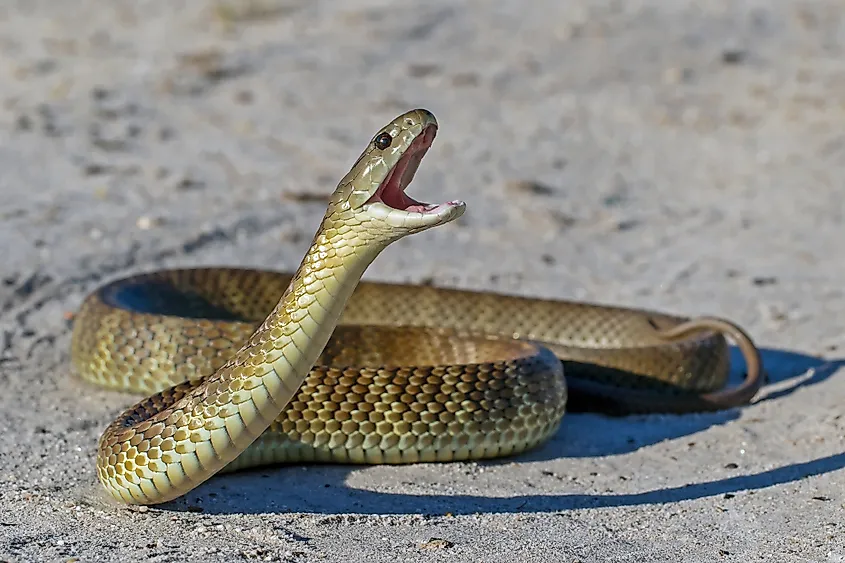
The Tiger Snake (Notechis scutatus) is another formidable predator found in South Australia. These snakes can be found in a wide range of habitats, from coastal wetlands to the inland, particularly around the Murray River and the southern coastal regions of the state. The Tiger Snake is known for its distinctive black and yellow banding and is unlikely to be mistaken for a different snake. Although normally shy and preferring flight to fight, this species is highly aggressive when threatened, curving itself into a tense striking posture with its head raised, and its venom is capable of causing death within hours if not treated.
Western Brown Snake
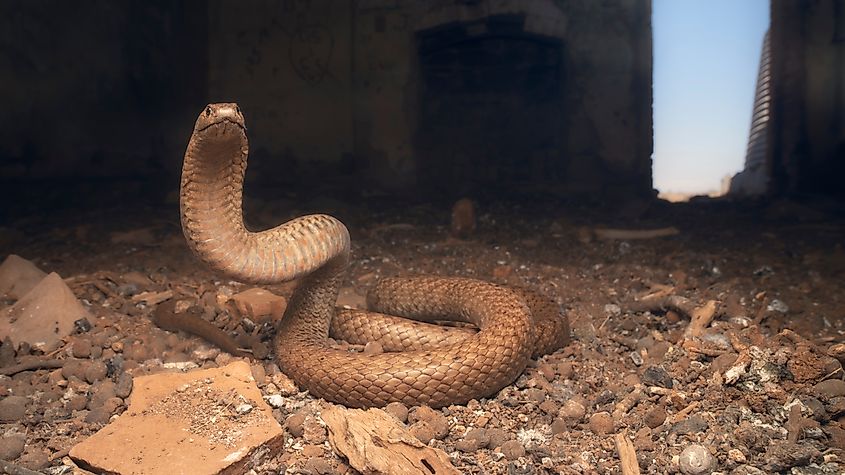
The Western Brown Snake (Pseudonaja nuchalis) is similar in appearance to the Eastern Brown Snake but generally has a more subdued color palette, ranging from brown to yellow-brown. Its venom is potent, and it is capable of delivering a fatal bite if not treated promptly. Typically found in more arid environments, such as the semi-desert regions of South Australia, the Western Brown Snake also roams agricultural land and lightly wooded areas. Its long, slender body and fast movements make it difficult to spot, and like the Eastern Brown, it is a common cause of snakebite incidents in rural regions.
Red-bellied Black Snake
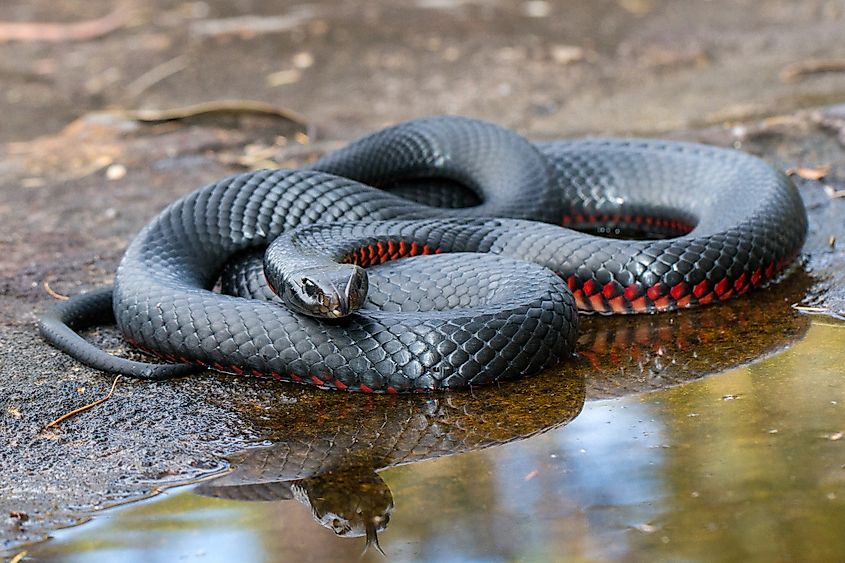
The Red-bellied Black Snake (Pseudechis porphyriacus) is primarily found in the eastern coastal parts of South Australia. These snakes tend to inhabit coastal regions, wetlands, and riverine areas, where they can be found basking in the sun on the banks of rivers or swamps. The Red-bellied Black Snake is not as aggressive as some of the other species on this list, but it can be dangerous if provoked. True to its name, this snake has a distinctive red or orange belly with a glossy black back. While its venom is not as deadly as that of the Eastern Brown or Inland Taipan, it can still cause severe illness, and its bite is capable of causing significant tissue damage.
Common Death Adder
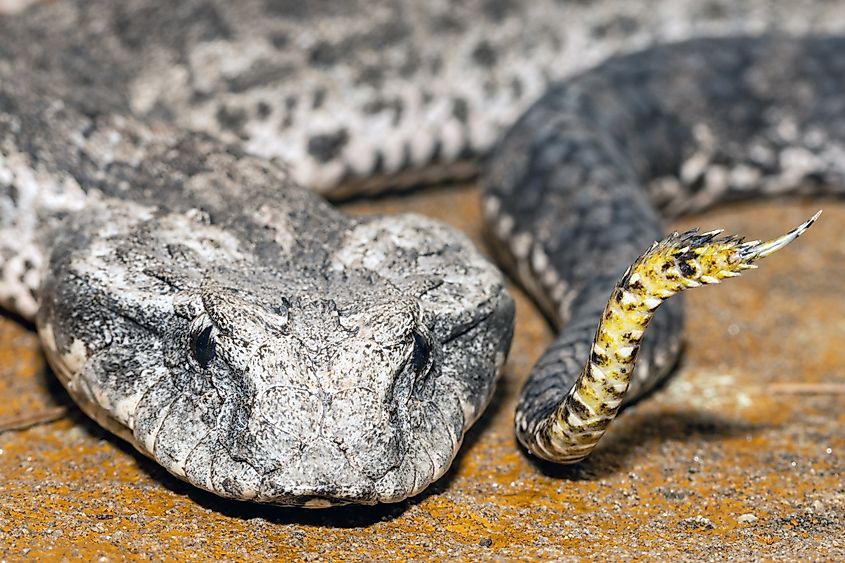
The Common Death Adder (Acanthophis antarcticus) is one of the most elusive and deadly snakes in South Australia. Found in a variety of habitats, from forests, woodlands, and grasslands to coastal areas, the Death Adder is particularly adept at camouflaging itself in leaf litter or underbrush. Its body is short and thick, and its tail has a unique appearance that mimics a small, wriggling worm used to lure prey. The Death Adder’s venom was 60% deadly prior to the development of anti-venom, and it is highly neurotoxic. A bite can cause paralysis, respiratory failure, and death if not treated quickly. Interestingly, this snake is nocturnal in South Australia but can be diurnal in different climates. Its cryptic nature and slow-moving behavior mean that it is often not encountered unless someone is actively searching for it.
Small-eyed Snake
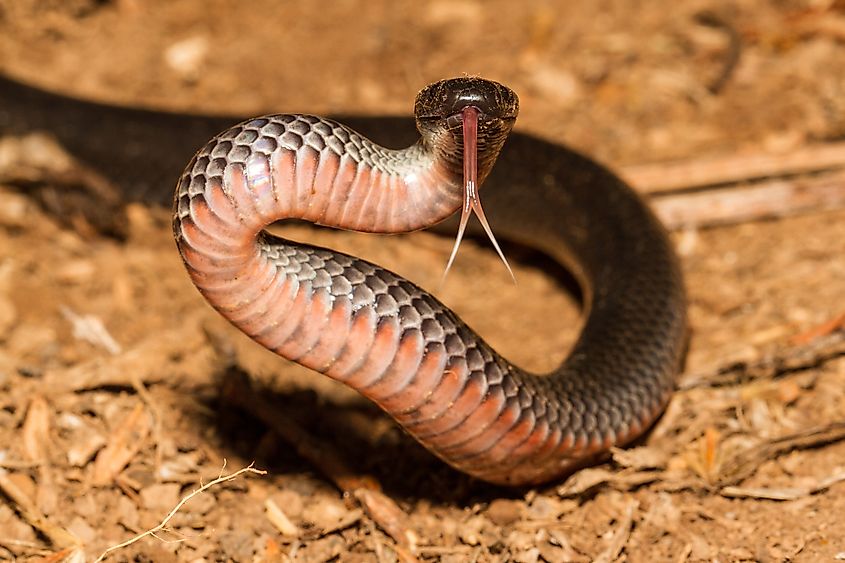
The Small-eyed Snake (Cryptophis nigrescens) is a venomous species found in southern and eastern South Australia and gets its name honestly. This relatively small snake typically reaches lengths of 60 to 90 cm (2 to 3 feet) and has a slender, dark brown or black body with a lighter underside. Preferring to forested areas, heathlands, and scrubby terrain, the small-eyed snake is primarily nocturnal, hunting small lizards and frogs. Although not as aggressive as some other venomous species, it can strike when threatened. Its venom is a mix of neurotoxins and hemotoxins, capable of causing paralysis and internal bleeding. While fatalities are rare due to its reclusive nature, a bite can be fatal without swift medical attention.
Mulga Snake
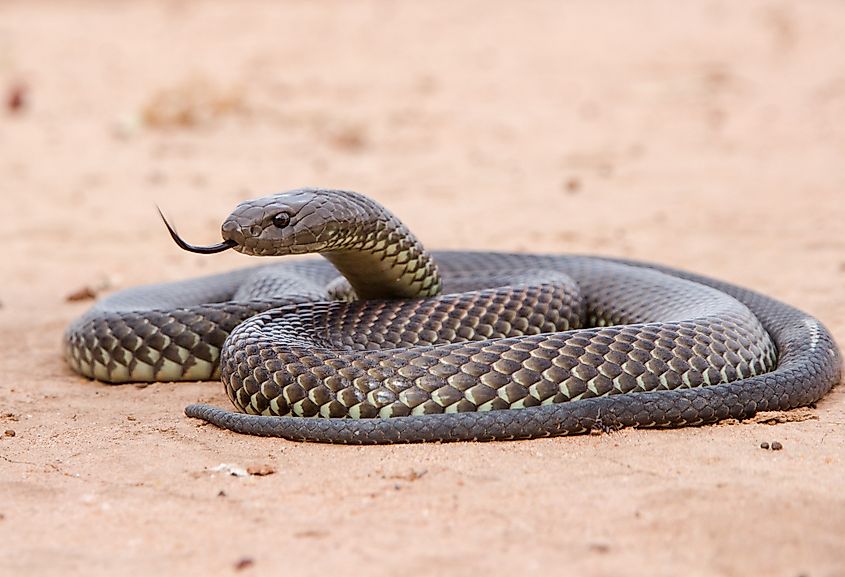
The Mulga Snake (Pseudechis australis), the King Brown Snake, is Australia's most broadly distributed snake. This large, robust species can grow to lengths of over 2 meters, making it one of the longest venomous snakes in Australia. Its distinct appearance owes to the fact that its scales are not solid colored but a gradient from a lighter color to a darker color, usually a yellowish hue to a dark brown, creating a very striking visual effect. The Mulga Snake is typically found in the arid regions of South Australia and prefers various habitats, including grasslands, scrublands, and sandy deserts, where it hunts small mammals, birds, and reptiles. The Mulga Snake's venom is highly toxic and can cause paralysis and severe tissue damage. Despite its fearsome reputation, the Mulga Snake is not particularly aggressive unless provoked, but it can deliver multiple strikes in quick succession.
Collett's Snake
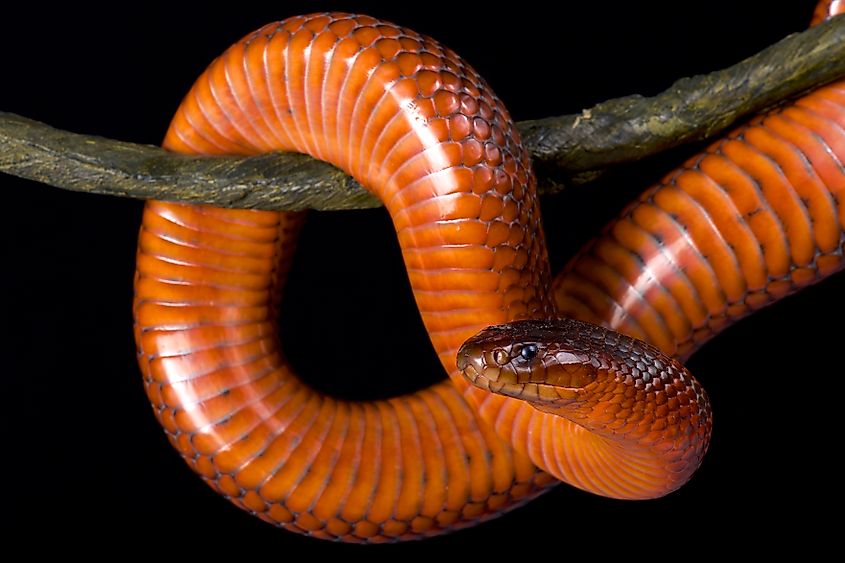
Collett's Snake (Denisonia collettei) is a venomous species found most abundantly in central Queensland, but it has been seen in parts of South Australia. This rare and elusive snake inhabits semi-arid regions where it preys on small reptiles and amphibians. Collette’s Snake is a relatively small species, typically measuring around a meter in length, with a slender, elongated body. It is predominantly dark brown or black with reddish stripes, leading to its nickname, Downs Tiger Snake, and providing effective camouflage in its natural environment. Collette's Snake has potent venom that can cause significant symptoms, including paralysis and internal bleeding, though bites to humans are rare because of its shy and reclusive nature and its small population in South Australia.
Lowland Copperhead Snake
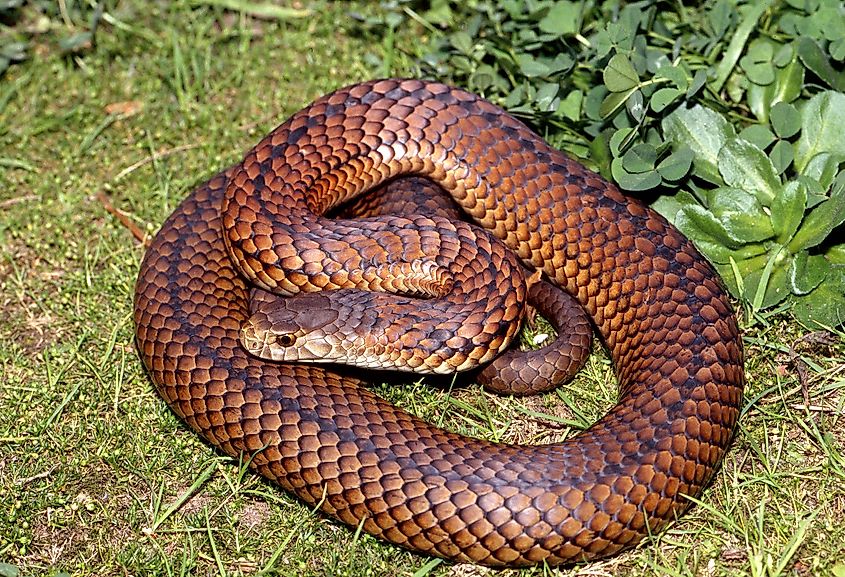
The Lowland Copperhead Snake (Austrelaps superbus) is a highly venomous species found in lowland areas of South Australia, including forested areas, woodlands, and scrublands, often near water sources. Copperheads are relatively robust and muscular, growing up to around 1.5 meters in length. They have a distinctive appearance, with a reddish-brown or copper-colored head and snout, which gives the species its name, and a mostly solid-colored grey to brown body.
Copperheads typically prefer to avoid confrontations by remaining hidden under rocks and in undergrowth. They will warm potential targets by hissing and flopping about before they strike. Their venom contains a potent mix of toxins that can cause severe pain and swelling and, if left untreated, can be fatal. Despite their docile nature, they do frequently live in proximity to humans, which leads to more frequent encounters than many of the other snakes on this list, and for that reason, people should be aware of them, particularly when hiking or otherwise in their habitat.
Duggite
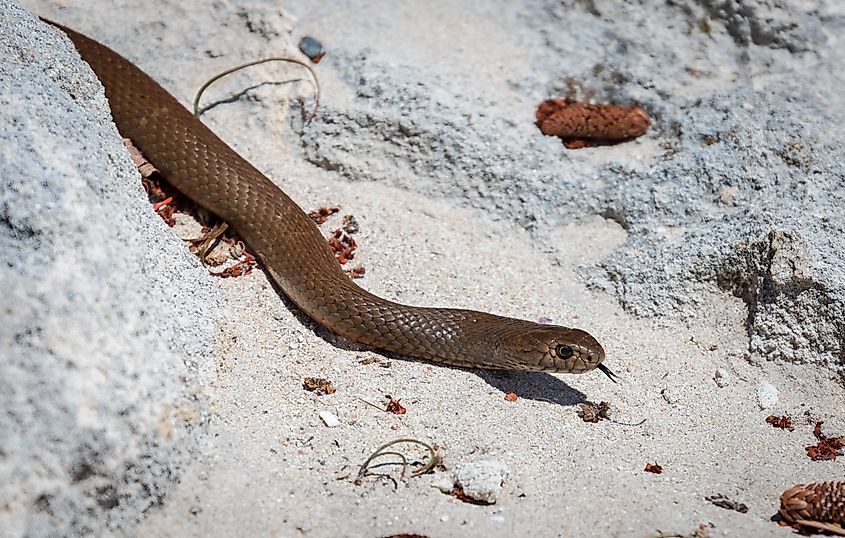
The Duggite (Pseudonaja affinis) is a highly venomous snake native to southwestern Australia, including the easternmost parts of South Australia. Known for its elusive nature, the Duggite is typically found in coastal heathlands, woodlands, and scrubby areas. It can grow to lengths of about 2 meters, with an average closer to 1.5 meters. It has a slender, long body with a head that is not visually distinct from its body. Its scales are smooth, olive-brown to greyish-green appearance, often with lighter underbelly coloration. The Duggite’s venom contains potent toxins that can cause paralysis and respiratory failure and, if not treated, can be fatal. Though it is generally shy and not especially aggressive, the Duggite is known to be fast-moving and highly defensive when threatened, striking quickly if it feels cornered.
Safety Measures and Ecological Importance
While the snakes of South Australia are undeniably dangerous, it is important to remember that they generally avoid human contact. Most snakebite fatalities occur when the snake is inadvertently disturbed or threatened. With proper precautions, such as wearing boots in snake-prone areas and being aware of one’s surroundings, the risk of snakebite can be minimized. The snakes of South Australia, although deadly, are vital parts of the ecosystem, controlling pest populations and maintaining the balance of nature.











